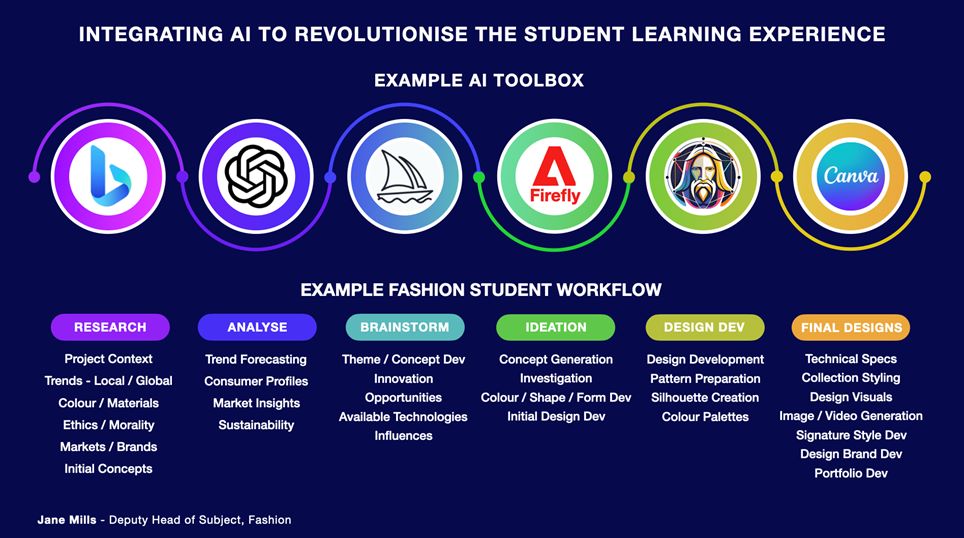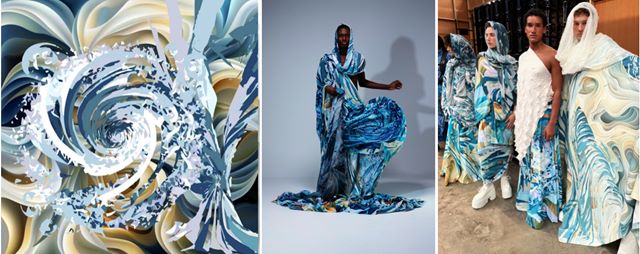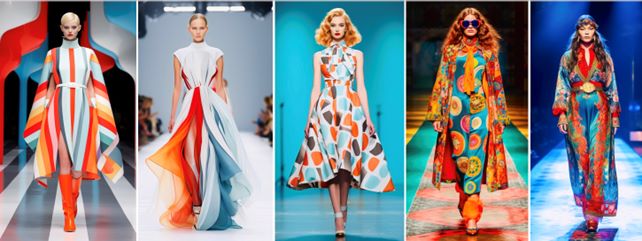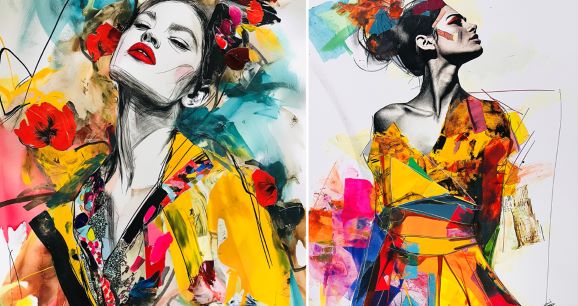In my role as an educator, I have witnessed firsthand the rapid evolution of technology and its profound impact on the design and fashion manufacturing sectors. One of the most exciting developments in recent years is the advent of generative AI (GenAI).
GenAI is transforming the fashion industry, from product creation to trend forecasting, retail, and supply logistics. As educators, it’s our responsibility to equip our students with the skills and knowledge they need to thrive in an increasingly digital and AI-driven world.
This technology is revolutionising both the fashion industry and education by integrating Generative AI (GenAI) into the curriculum by preparing students with relevant and advanced skills, it gives them a competitive edge. It’s crucial for higher education to keep pace with rapid technological advancements and equip students to meet the challenges and opportunities presented by GenAI, particularly as they gain access to various digital tools with embedded GenAI capabilities.
At a recent Digital Northants Merged Futures conference in June, I took the audience on a journey through the development of text-to-image models, discussing early explorations in GenAI through to the present day. These models have progressed to the point where it is virtually impossible to distinguish between what is real and what is not. While many have raised concerns and find this prospect daunting, I believe that if used ethically and transparently, it represents an exciting opportunity. Human creativity has always been boosted with each new breakthrough in technology, from the invention of the printing press to the digital technologies of today.

Integrating AI into Fashion Education
As a fashion educator, I find the integration of AI into our curriculum incredibly exciting. At the University of Northampton, we encourage our students to collaborate with AI, balancing human creativity with machine efficiency. This approach is not about replacing human creativity or expression but ethically working alongside it to enhance the creative process.
Aligned with the University of Northampton’s proactive stance on acknowledging and integrating GenAI ethically, we are committed to building our staff and students’ critical AI literacy. In the fashion subject area, we have introduced and piloted a digital tools logbook. This logbook allows students to document their entire journey with Generative AI, showcasing how they use these tools to support the development of their creative concepts and evidence their journey.
The digital tools logbook provides a structured framework for students to explore and utilise GenAI confidently for brainstorming and research. It encourages them to reflect on their processes and outcomes, fostering a deeper understanding of AI’s role in their creative work.
However, the use of AI also raises important ethical questions about originality, authorship, and potential biases, it’s essential to address these issues within our curriculum, promoting critical thinking about the ethical implications of AI in design.
By doing so, we ensure that our students are not only adept at using these advanced tools but are also mindful of the broader impacts of their use.
Developing AI Literacy Skills
Students need to learn about the basics of GenAI, such as what it is, how it works, and what it can and cannot do, they also need to be aware of the ethical, social, and environmental implications of AI, such as its impact on privacy, security, bias, and sustainability. Developing AI literacy can help students become informed and responsible users of GenAI.
As students gain valuable experience using this transformative technology, encouraging critical thinking about the implications of AI is crucial. These tools can inspire students, demonstrating diverse applications of GenAI and highlighting how they can tailor the technology to their individual creative needs, thereby enhancing their employability skills.
Practical Applications
Generative AI serves as a powerful tool for students to explore endless design possibilities; by inputting various design elements and parameters, students can generate unique concepts that they might not have conceived through traditional methods. This not only enhances their creativity but also pushes the boundaries of conventional design. Incorporating AI tools like DALL-E, Stable Diffusion, and Leonardo in practical project assignments allows students to generate initial ideas, brainstorm, and kick-start their creative design concepts, followed up by manual and physical sample development.
Brainstorming creative design concepts is one of the most exciting applications of generative AI. For example, I introduced an AI workshop to final-year students at the early stages of their projects, students explored how to create effective prompts based on their own creative proposals. Learning how to develop effective prompts is crucial to getting the best out of generative AI.
The workshop provided students with practical insights and hands-on experience by exploring prompts around their own creative design proposals, they started with fairly basic prompts and then gradually refined them based on the outputs that they were generating. This session, supported by the Creative AI Toolbox I created for the workshop, helped students define the parameters and elements that were important to developing their personal projects.

This workshop not only sparked their creativity but also led to innovative ideas that they further developed with physical sample explorations and prototype development. It helped the students move forward more confidently and effectively with their ideas, helping to push the boundaries of conventional design.
Students Developing AI Literacy
Students have embraced GenAI as a brainstorming tool, finding it particularly useful for the initial stages of the design process. This academic year saw the first integration of AI skills into students’ final year fashion collections.
Case Study 1: Exploration of Alternate and Parallel Realities
Vimisha Patel is a final-year Textiles for Fashion student whose final year concept explored alternate and parallel realities for her creative design concept. By integrating GenAI and combining digital printing technologies with traditional hand screen printing techniques, Vimisha was able to create unique and innovative printed textile designs that vividly expressed her visionary concept.

Case Study 2: Sculptural Fashion inspired by Marine Ecosystems
Final-year fashion student Mellonia mainly used Large Language Models like ChatGPT to gain insights into the importance of plankton and its role in marine ecosystems, which include fish, birds, and marine mammals. She drew parallels between plankton’s role in the ecosystem and her own life as a mother of five, realising that she was the ‘plankton’ of her family, vital to their survival and well-being.
This personal revelation became a pivotal point in Mellonia’s creative direction, it inspired her to develop sculptural pieces using traditional leather techniques. She explained that she preferred interacting with ChatGPT while her children were asleep, finding it more personal and interactive than simply using Google. This allowed her to ask questions freely, no matter how simple, and receive detailed, conversational responses.
This interaction helped Mellonia to push the boundaries of conventional design and supported her in developing a unique, personal and meaningful fashion collection.

Case Study 3: Printed Textile Collection inspired by Dreams
Florence Grewal is a final-year Textiles for Fashion student whose creative concept draws from her personal struggles and triumphs. She explores how the purpose of dreams evolves, believing that many people lose touch with their dreams, which impacts their passion, creativity, and joy. Through extensive research on historical art movements and scientific studies, and by combining GenAI with her own original photography to create three-dimensional collages, she has created a range of unique digital prints. Her aim is to inspire joy and creativity, offering a brief escape from the mundane and reminding people of the power and importance of dreaming.

Undoubtedly the adoption and incorporation of this groundbreaking technology will raise significant challenges that higher education will perhaps find a difficult path to tread. However, I see that GenAI is an unstoppable force and its integration into the curriculum is crucial for preparing the next generation of designers, and by embracing this technology, we can foster a more innovative, personalised and sustainable approach to design education.
As educators I believe it’s our responsibility to equip our students with the skills and knowledge they need to thrive in an increasingly digital and AI driven world.
Jane Mills is Deputy Head of Fashion at the University of Northampton, she is a member of the UON AI Steering Group, and a member of the Study Smart: Staff & Student co-constructing AI Literacy Research Group.



